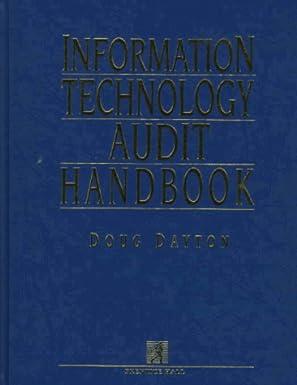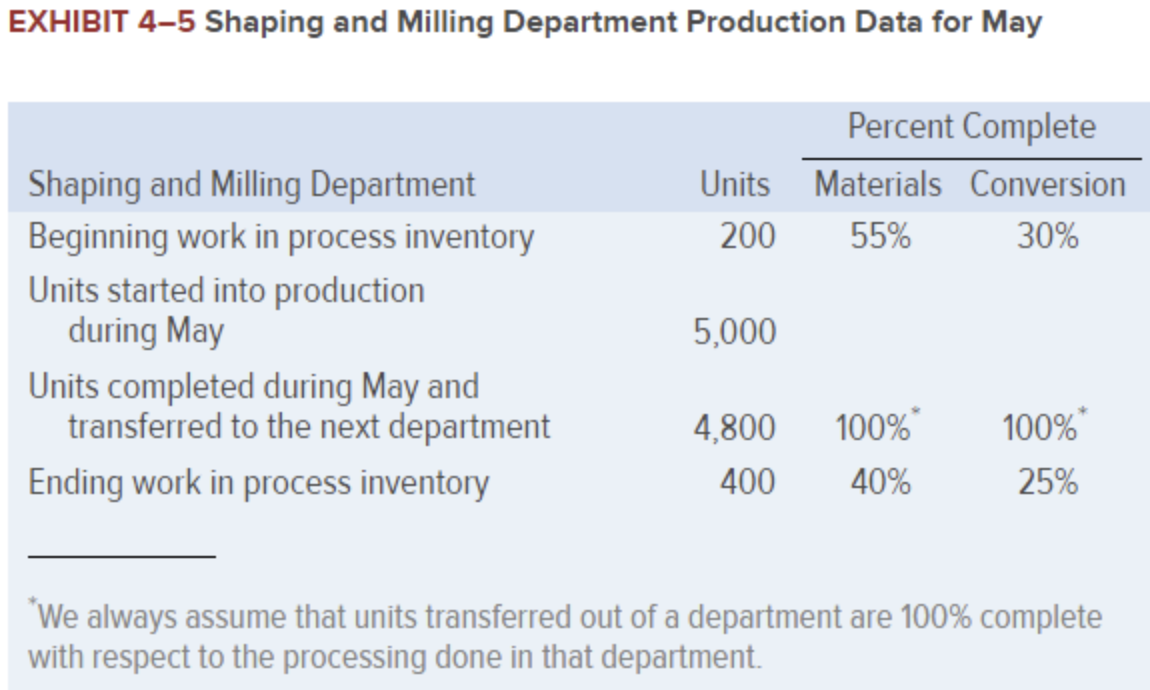
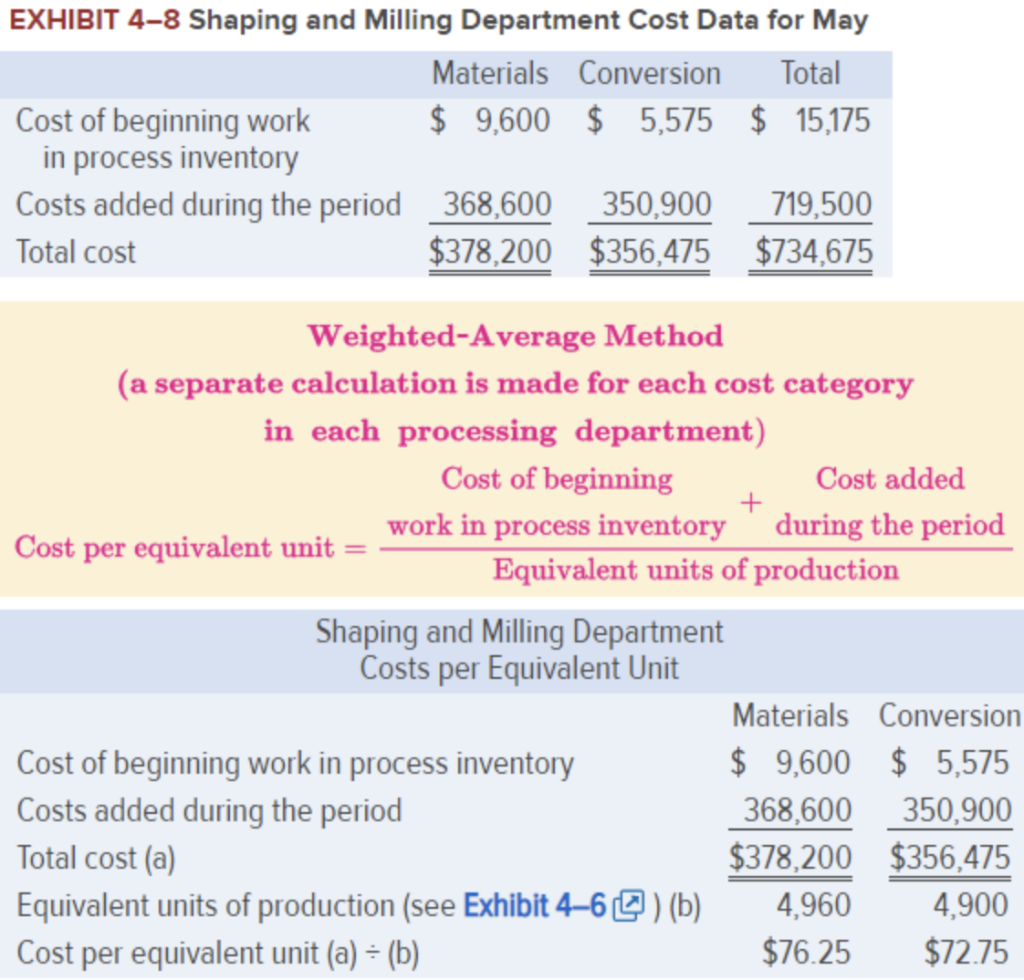
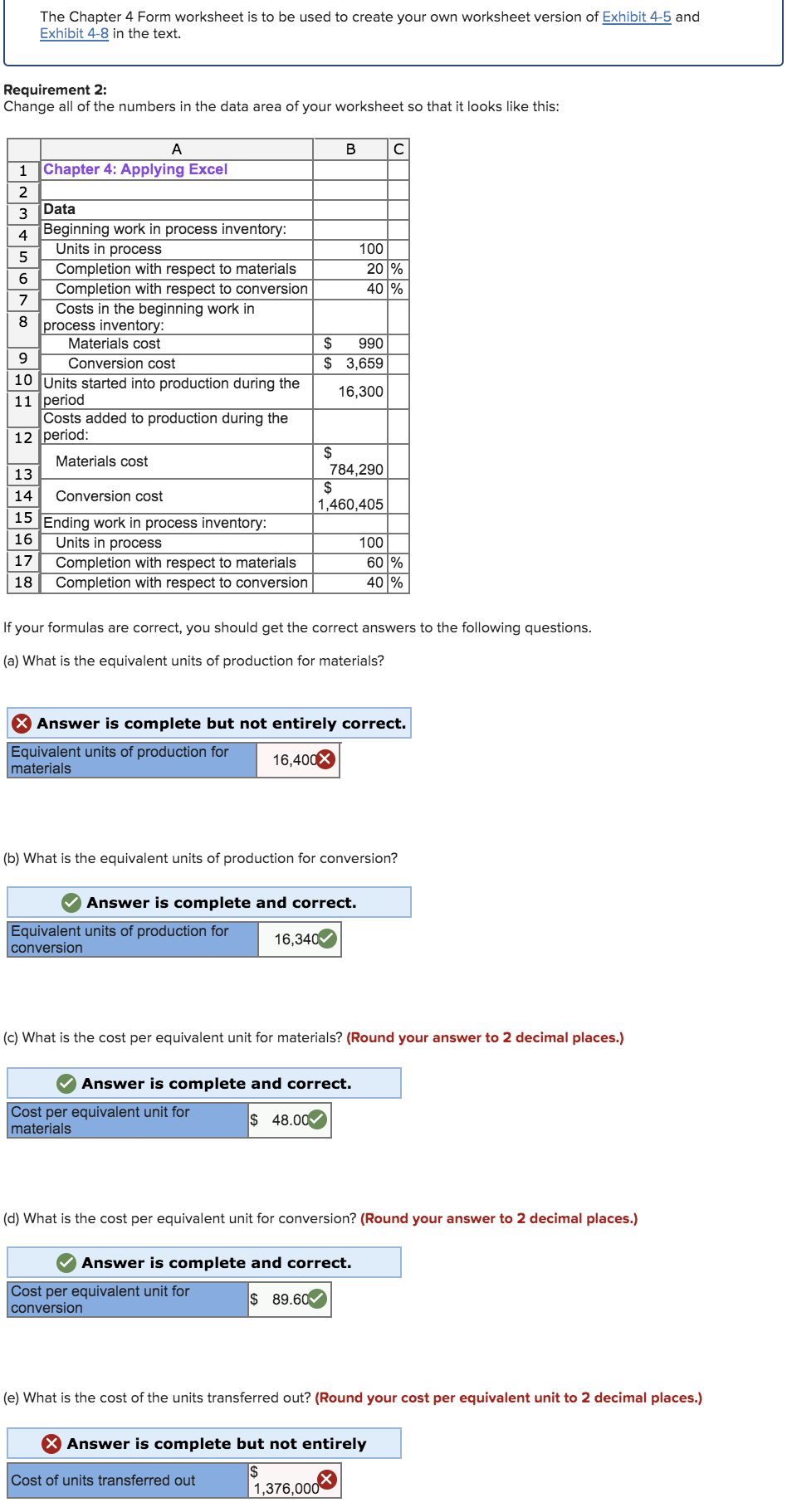
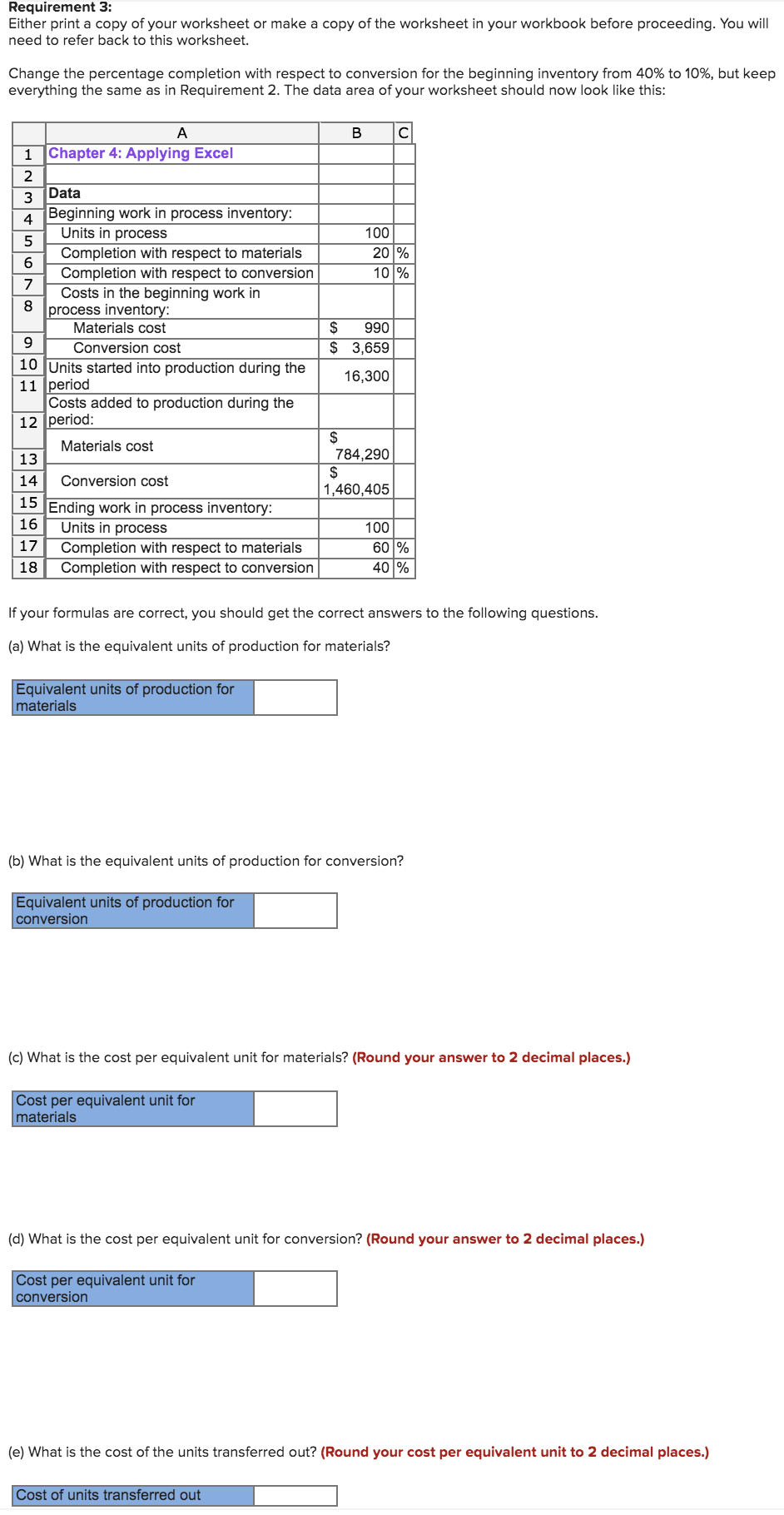

EXHIBIT 4-5 Shaping and Milling Department Production Data for May Percent Complete Units Materials Conversion 200 55% 30% Shaping and Milling Department Beginning work in process inventory Units started into production during May Units completed during May and transferred to the next department Ending work in process inventory 5,000 100%" 4,800 400 100% 40% 25% "We always assume that units transferred out of a department are 100% complete with respect to the processing done in that department. EXHIBIT 4-8 Shaping and Milling Department Cost Data for May Materials Conversion Total Cost of beginning work $ 9,600 $ 5,575 $ 15,175 in process inventory Costs added during the period 368,600 350,900 719,500 Total cost $378,200 $356,475 $734,675 Weighted-Average Method (a separate calculation is made for each cost category in each processing department) Cost of beginning Cost added work in process inventory during the period Cost per equivalent unit = Equivalent units of production Shaping and Milling Department Costs per Equivalent Unit Materials Conversion Cost of beginning work in process inventory $ 9,600 $ 5,575 Costs added during the period 368,600 350,900 Total cost (a) $378,200 $356,475 Equivalent units of production (see Exhibit 46 @ ) (b) 4,960 4,900 Cost per equivalent unit (a) = (b) $76.25 $72.75 The Chapter 4 Form worksheet is to be used to create your own worksheet version of Exhibit 4-5 and Exhibit 4-8 in the text. Requirement 2: Change all of the numbers in the data area of your worksheet so that it looks like this: B A Chapter 4: Applying Excel 1 2 3 Data 100 20 % 40% $ 990 $ 3,659 16,300 4 Beginning work in process inventory: 5 Units in process Completion with respect to materials 6 Completion with respect to conversion 7 Costs in the beginning work in 8 process inventory: Materials cost 9 Conversion cost 10 Units started into production during the 11 Iperiod Costs added to production during the 12 period: Materials cost 13 14 Conversion cost | 15 Ending work in process inventory: 16 Units in process 17 Completion with respect to materials 18 Completion with respect to conversion $ 784,290 $ 1,460,405 100 60% 40% If your formulas are correct, you should get the correct answers to the following questions. (a) What is the equivalent units of production for materials? X Answer is complete but not entirely correct. Equivalent units of production for materials 16,400x (b) What is the equivalent units of production for conversion? Answer is complete and correct. Equivalent units of production for conversion 16,340 (c) What is the cost per equivalent unit for materials? (Round your answer to 2 decimal places.) Answer is complete and correct. Cost per equivalent unit for $ 48.00 materials (d) What is the cost per equivalent unit for conversion? (Round your answer to 2 decimal places.) Answer is complete and correct. Cost per equivalent unit for $ 89.60 conversion (e) What is the cost of the units transferred out? (Round your cost per equivalent unit to 2 decimal places.) X Answer is complete but not entirely Cost of units transferred out $ 1,376,000 Requirement 3: Either print a copy of your worksheet or make a copy of the worksheet in your workbook before proceeding. You will need to refer back to this worksheet. Change the percentage completion with respect to conversion for the beginning inventory from 40% to 10%, but keep everything the same as in Requirement 2. The data area of your worksheet should now look like this: B A 1 Chapter 4: Applying Excel 2 3 Data 100 20% 10% $ 990 $ 3,659 16,300 4 Beginning work in process inventory: 5 Units in process Completion with respect to materials 6 Completion with respect to conversion 7 Costs in the beginning work in 8 process inventory: Materials cost 9 Conversion cost 10 Units started into production during the 11 Iperiod Costs added to production during the 12 period: Materials cost 13 14 Conversion cost 15 Ending work in process inventory: 16 Units in process 17 Completion with respect to materials 18 Completion with respect to conversion $ 784,290 $ 1,460,405 100 60% 40% If your formulas are correct, you should get the correct answers to the following questions. (a) What is the equivalent units of production for materials? Equivalent units of production for materials (b) What is the equivalent units of production for conversion? Equivalent units of production for conversion (c) What is the cost per equivalent unit for materials? (Round your answer to 2 decimal places.) Cost per equivalent unit for materials (d) What is the cost per equivalent unit for conversion? (Round your answer to 2 decimal places.) Cost per equivalent unit for conversion (e) What is the cost of the units transferred out? (Round your cost per equivalent unit to 2 decimal places.) Cost of units transferred out (f) Which of the following statements are true? (You may select more than one answer. Single click the box with the question mark to produce a check mark for a correct answer and double click the box with the question mark to empty the box for a wrong answer. Any boxes left with a question mark will be automatically graded as incorrect.) In the weighted-average method, the percentage completion of beginning inventory has no effect on the equivalent units of production. O in the weighted-average method, the percentage completion of beginning inventory has no effect on the cost per equivalent unit. In the weighted-average method, the percentage completion of beginning inventory has no effect on the cost of the units transferred out











